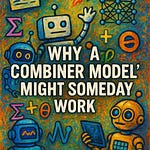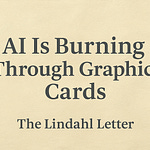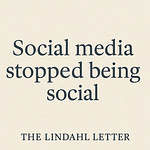Thank you for tuning in to week 204 of the Lindahl Letter publication. A new edition arrives every Friday. This week the topic under consideration for the Lindahl Letter is, “Context window garbage collection.”
Here we are this week contemplating how to clean up the mess from all these celebrated LLM chat sessions. It’s a disjointed mess that lacks federation or dare we say portability. We are at the point where we need to think about how context window garbage collection explores the deeper process based idea of how large language models might manage overflowing histories, selectively pruning, discarding, or compressing tokens to maintain efficiency without losing coherence. Certainly my thoughts on this is that we would all benefit from portable knowledge sharding, but that is just one way to look at the potential set of solutions that need to be built. Another way to slice the apple up and put just the best parts back together again would be to build out some context window garbage collection.
When you open a long conversation with a large language model, the context window eventually fills with tokens from your prompts and the model’s replies. These windows have strict limits, whether 128k tokens, 200k tokens, or more, and yet our usage tends to grow indefinitely. As prompts expand, sessions become inefficient and costly, sometimes degrading in coherence as irrelevant or outdated details pile up. We have all run into hallucinations and just weird output from models. At this point in the experience the next best question then becomes very clear. We have to evaluate how models should manage their overflowing context windows at the end or during a chat session.
In programming, garbage collection has long been the answer to similar problems. Long garbage collection problems have literally kept me up at night. Computer systems with finite memory must constantly decide what to keep and what to discard. Techniques such as reference counting, mark-and-sweep, and generational garbage collection have been developed to handle this challenge. The analogy we can build out here is very straightforward: in a world where context is the working memory of LLMs, garbage collection could provide the rules and processes for pruning, summarizing, or discarding tokens without breaking continuity.
Several strategies already hint at how this could work. Some systems automatically prune less relevant history, while others compress sections of text into summaries or embeddings that can be retrieved later. I would run a knowledge reduce function based on my previously shared research, but I always think that is the answer. User-directed pinning, where important content is marked as permanent, is another possible feature. In longer interactions, models could run background “cleanup passes,” automatically condensing earlier exchanges into portable knowledge shards. Each of these approaches mirrors classic computing strategies while being adapted to the new problem space of language models.
The risks are obvious. Things could go sideways. We face a direct computing time cost associated with this effort. Poorly designed garbage collection could lead to subtle context loss, missing small but crucial details. Summarization may introduce semantic drift or hallucinations. I would argue that properly structured context will actually reduce drift or hallucinations. Users may also resist invisible pruning, questioning whether they can trust a model that silently discards information. The challenge lies in balancing efficiency, fidelity, and transparency, ensuring that garbage collection makes interactions smoother rather than introducing new points of failure.
Looking forward, context window garbage collection could become a fundamental layer of model architecture. Standardized processes and even some APIs might emerge to expose garbage collection logs to users or allow customization of pruning strategies. Entire ecosystems of agents could share compressed or pruned context shards across models, creating interoperability where today there is only fragmentation. Just as garbage collection enabled more scalable and reliable programming environments, context window garbage collection may become the invisible backbone of scalable AI interaction.
Things to consider:
Should context garbage collection be visible and user-controllable?
Can models balance efficiency with fidelity when pruning?
What lessons from programming garbage collection apply directly to LLMs?
Does context GC make interoperability between models easier or harder?
What’s next for the Lindahl Letter? New editions arrive every Friday. If you are still listening at this point and enjoyed this content, then please take a moment and share it with a friend. If you are new to the Lindahl Letter, then please consider subscribing. Make sure to stay curious, stay informed, and enjoy the week ahead!











